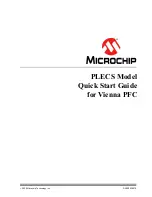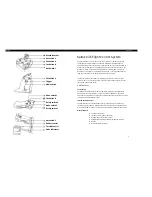
ECON-4 1.4.0 Global Guide
16
Range
Recommended wiring
Input
Terminals
Jumpers
0-20 mA
SPEED REQUEST
S3.1
P22 – 20 mA
ACTIVE POWER
S3.2
P23 – 20 mA
0-10 V
SPEED REQUEST
S3.1
P22 – 10 V
ACTIVE POWER
S3.2
P23 – 10 V
SPEED REQUEST (S3.1)
The input defines speed reference. It can be set in the range from Nominal RPM - PerChSpdNom% to Nominal
RPM + PerChSpdNom%. Setpoint: EngineRPM:PerChSpdNom [1-20%] defines the maximum Percentage
change of Speed from Nominal in case BIN or ANA mode of control is used.
Example:
Analog input SPEED REQUEST is set to range 0 – 10 V, Nominal RPM is 1500 RPM, Input
voltage is 6 V. Speed reference is then ReqSpeed = 1500 + (PerChSpdNom/100)*1500*(6-5)/5 = 1524 RPM.
PerChSpdNom = 8 in the previous calculation.
Note:
Input SPEED REQUEST is active only if the setpoint Speed request has value ANA.
ACTIVE POWER (S3.2)
Input from the external transmitter of Active power. Value of the Active power is used to improve load step
response of the governor. Input ACTIVE POWER is active only, if the setpoint Speed request has not value
DATA. The input sensitivity can be adjusted by setpoint Load anticip.
Note:
Input ACTIVE POWER is active only if the setpoint Speed request has value BIN or ANA and setpoint
Load anticip > 0.
Collaboration with ECON-4Slave
Physical analog input on terminal S3.2 can be used also when ECON4-Slave is used. In this case feedback
from slave actuator is put on analogue output on slave and can be connected back to master to see it in one
Winscope (connected to master) and in controller thru CAN as Misf Angle.
Original Misf Angle calculation is not used in latest version of ECON4 and in version 1.4 is used to show
feedback from Slave. If feedback from slave is connected to analog input on S3.2 setpoint LoadAnticipation has
to be =0. Othervise wrong value will be used for load anticip resulting unstability and unpredictive control
Principle of connection Master Slave is shown on next picture.
















































